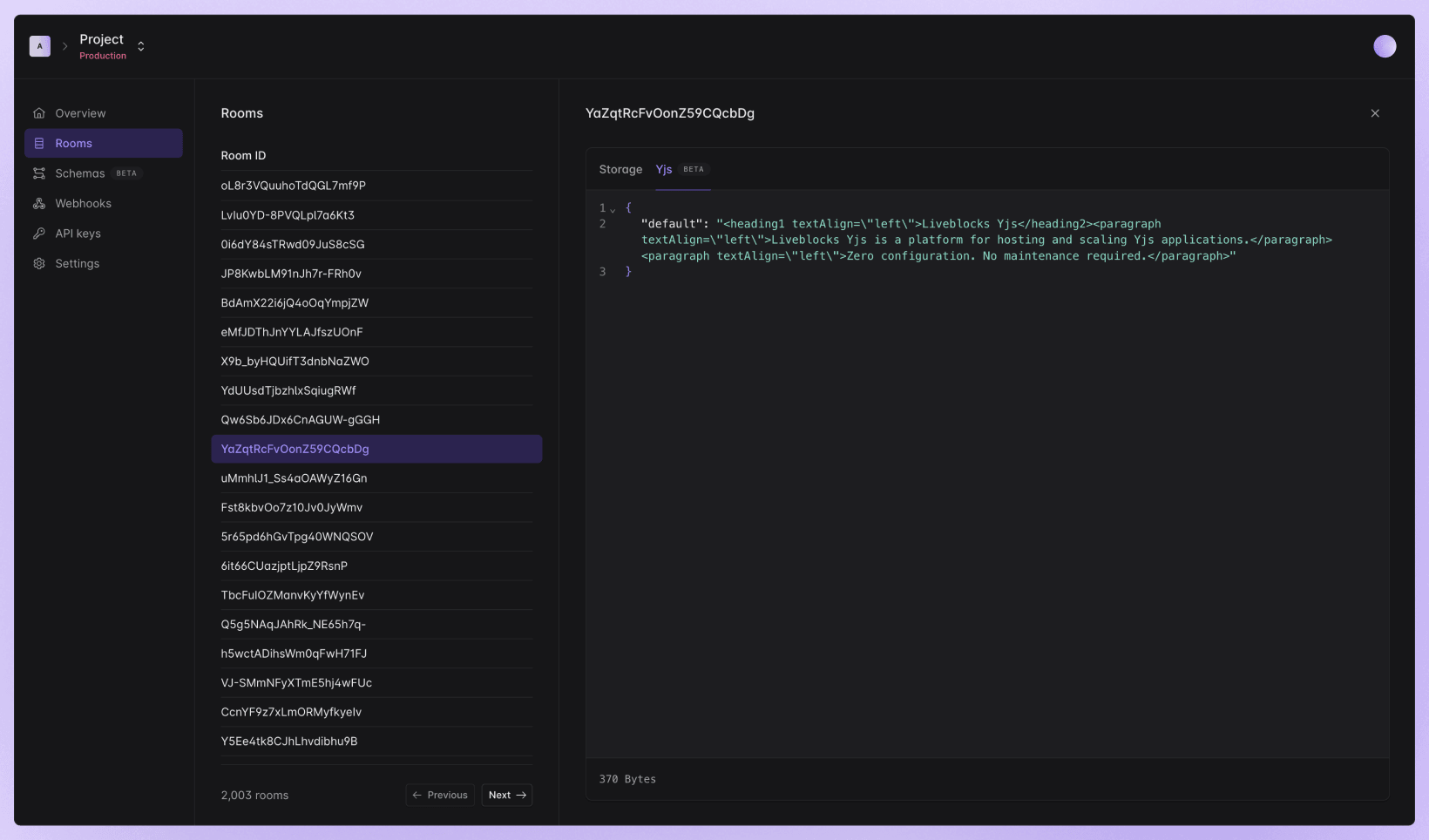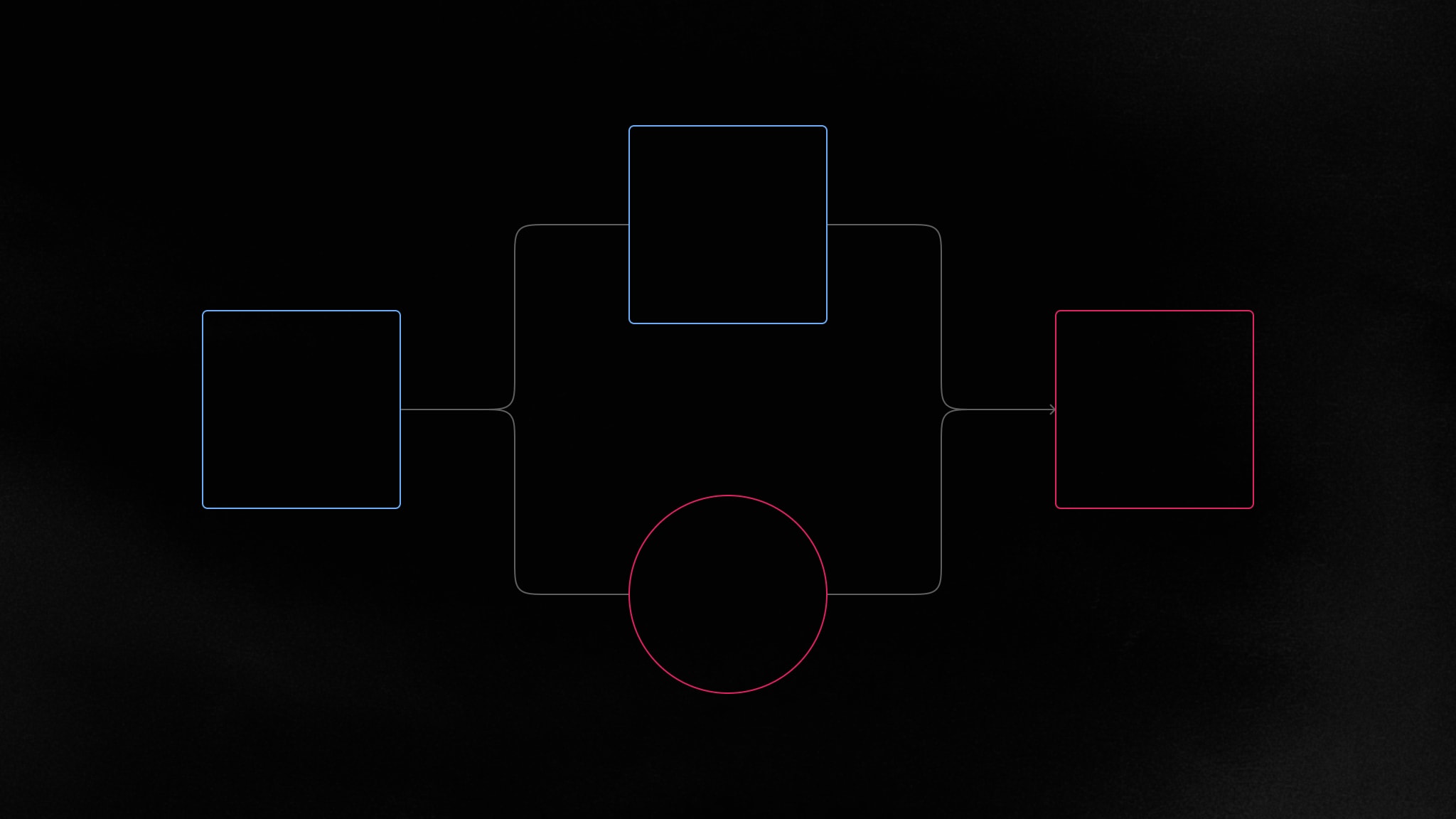Build collaborative text experiences with Liveblocks Yjs
For teams who want to build a collaborative text editing experince, like Google Docs, Liveblocks Yjs is a fully managed, highly scalable realtime data store for Yjs documents.

Liveblocks provides two powerful serverless data stores for real-time collaboration: Liveblocks Storage for multiplayer creative tools and Liveblocks Yjs for collaborative text editing. Liveblocks Yjs is a fully managed, highly scalable data store that lets you build Google Docs-style editors in days instead of months. Check out our open-source demo built with Liveblocks Yjs below.
What is Yjs you may ask? It’s an open-source CRDT framework created by Kevin Jahns that has grown to be the preferred way for developers to build collaborative rich text editors. It comes with powerful features such as multiplayer undo/redo, lazy loading subdocuments, and offline support. And thanks to its incredible community, Yjs already has integrations with the most popular open-source text and code editor frameworks out there: Lexical, Tiptap, Slate, Quill, CodeMirror, Monaco, and more.
The challenge though is that the decentralized nature of Yjs makes it difficult to scale for production applications. Since all updates get stored, Yjs documents tend to get big really fast. Plus, the raw Yjs data requires some heavy engineering lifting to be dealt with.
That’s why we’ve created Liveblocks Yjs, the world’s most advanced platform for building, hosting, and scaling Yjs applications. No configuration, no maintenance required.
Supercharged Yjs developer experience
It’s fair to say that developer experience is close to our heart so it was important to us that Yjs integrated seamlessly into the Liveblocks ecosystem you’re already used to: dashboard, DevTools, webhooks, REST API, and more.
A centralized hub for Yjs documents
Enable anyone on your team to view, inspect, and manage, stored Yjs documents from the Liveblocks dashboard.

Yjs triggered webhook events
Webhook events are triggered as users edit Yjs documents, enabling you to automatically perform custom actions in your back end, such as sending notifications, saving your data to a database, or indexing for search.

Interact with Yjs documents via REST API
The Liveblocks REST API enables you to retrieve and update Yjs documents. Ideal for syncing data with your own system.
Hosted on a robust and highly scalable WebSocket infrastructure
Liveblocks Yjs runs on a WebSocket infrastruture where Yjs documents are stored in edge regions close to your users, reducing latency and improving end-user performance while enabling you to scale effortlessly. Liveblocks also manages awareness and WebSocket connections automatically, so you don’t have to.

Getting started
Today, all users can get started with Liveblocks Yjs by using
@liveblocks/yjs, our Yjs provider.
This is how to set up your Yjs provider in JavaScript—attach this to your chosen editor to enable multiplayer.
Start with a guide
We recommend you start with a guide. We’ve written specific guides for each popular text and code editor.
We also have some more advanced Yjs guides focused around building more features into your app.
Try our examples
Along with our guides, we now have open-source examples for each editor, including the live demo posted in this article.
You can also try the Liveblocks Starter Kit for Next.js which now includes a collaborative text editor powered by Liveblocks Yjs.
Moving forward
We wouldn’t be here without the awesome work from Kevin Jahns and the Yjs community. Liveblocks is now a sponsor, and we’ll continue to invest in Yjs, furthering our aim of connecting people together, and building a more collaborative web.
Ready to get started?
Join thousands of companies using Liveblocks ready‑made collaborative features to drive growth in their products.


